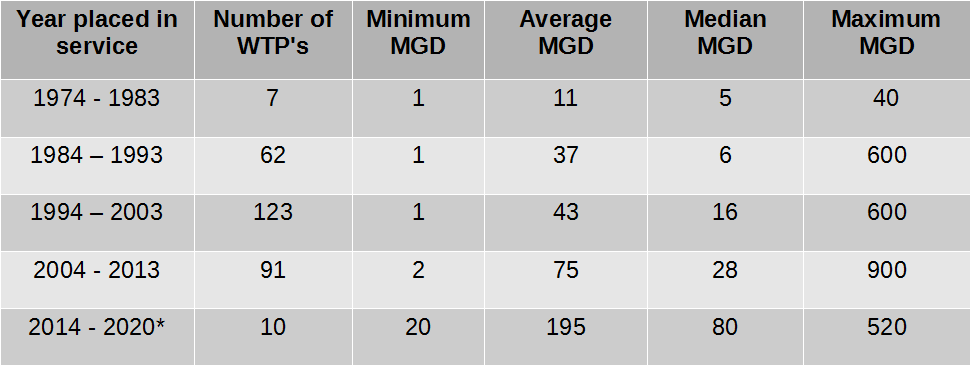For ozone to be produced from ambient air, it requires the air to be prepared and made suitable for production. Air contains gases including nitrogen and oxygen, apart from particles of dust, moisture, and small amounts of oil accumulated from the compressor used. Dry and prepared air keeps ozone equipment running at peak efficiency and will also extend the service life of the dielectric cells. Dry air will help ensure everything is quality throughout the process. Since the oxygen in the air is converted to ozone through electric discharge (high voltage), impurities in the air will interfere with ozone production, and could even produce unwanted chemical reactions that can be detrimental to the equipment used.
Moisture – Where Does it Come From?
Atmospheric air will always contain moisture, or water vapor. A significant drop or increase in temperature will cause moisture to condense out of the air. Saturation point is the point where air is holding all the water vapor it possibly can (100% relative humidity). If more water vapor is added to the saturated air, all of the water vapor would condense into a liquid. Condensation is the changing of water vapor into a liquid. The dew point is the temperature where water vapor would condense into a liquid.
What are the Effects of Moisture and Contaminants on Ozone Production?
Any contaminants in compressed air will negatively affect all components of the air distribution system, as well as the ozone cells themselves. Water vapor and any other contaminants in the ambient air will enter the compressor intake. The air contains Nitrogen, and as ozone is formed in the equipment, the presence of moisture will complete the chemical reaction that forms nitrous oxide with oxidation, proceeding fully into Nitrous and Nitric acids. These acids are very corrosive and tend to corrode all parts of the ozone generator, which reduces the effective life of the equipment as well as increases the maintenance cost. If dust is present, it could cause sparks and inconsistent corona, which in turn reduces the ozone production as well as producing what are known as pin holes in the glass di-electric, over time. This will result in the failure of equipment. Additionally, if ozone is used in water and air treatment, the presence of these acids could be expected to be in the water and the air which is not advisable.
How are Moisture and Contaminants Removed?
After-coolers are a good firs step. The compressed air is lowered to a safe, usable level and remove up to 70% of the water vapor, yet the water is still saturated. A further drop in temperature cases an additional condensation to occur in the downstream air lines. The air dryers remove the water vapor and lower the dew point temperature of the compressed air. This will prevent liquid water from forming downstream, but it does not eliminate all of the entrained contaminants. Filters and separators then remove the liquid water, and solid and gas contaminants that will adversely affect the air system. Drains discharge the accumulated water and liquid contaminants from the various points through the system.
How Do I Select the Right Air Dryer?
Considered these factors when determining the most cost-effective, compressed air-drying system that is suitable for the application. The varying factors are their dew point, initial cost, and ongoing maintenance requirements.
Point to Remember
-Choose a dew point temperature below the lowest ambient temperature to which your compressed air system will be exposed.
-Determine which dryers will produce the required dew point.
-Consider initial and operating costs. The lower the dew point, the more expensive the dryer is to purchase and operate but the More the ozone is produced.

